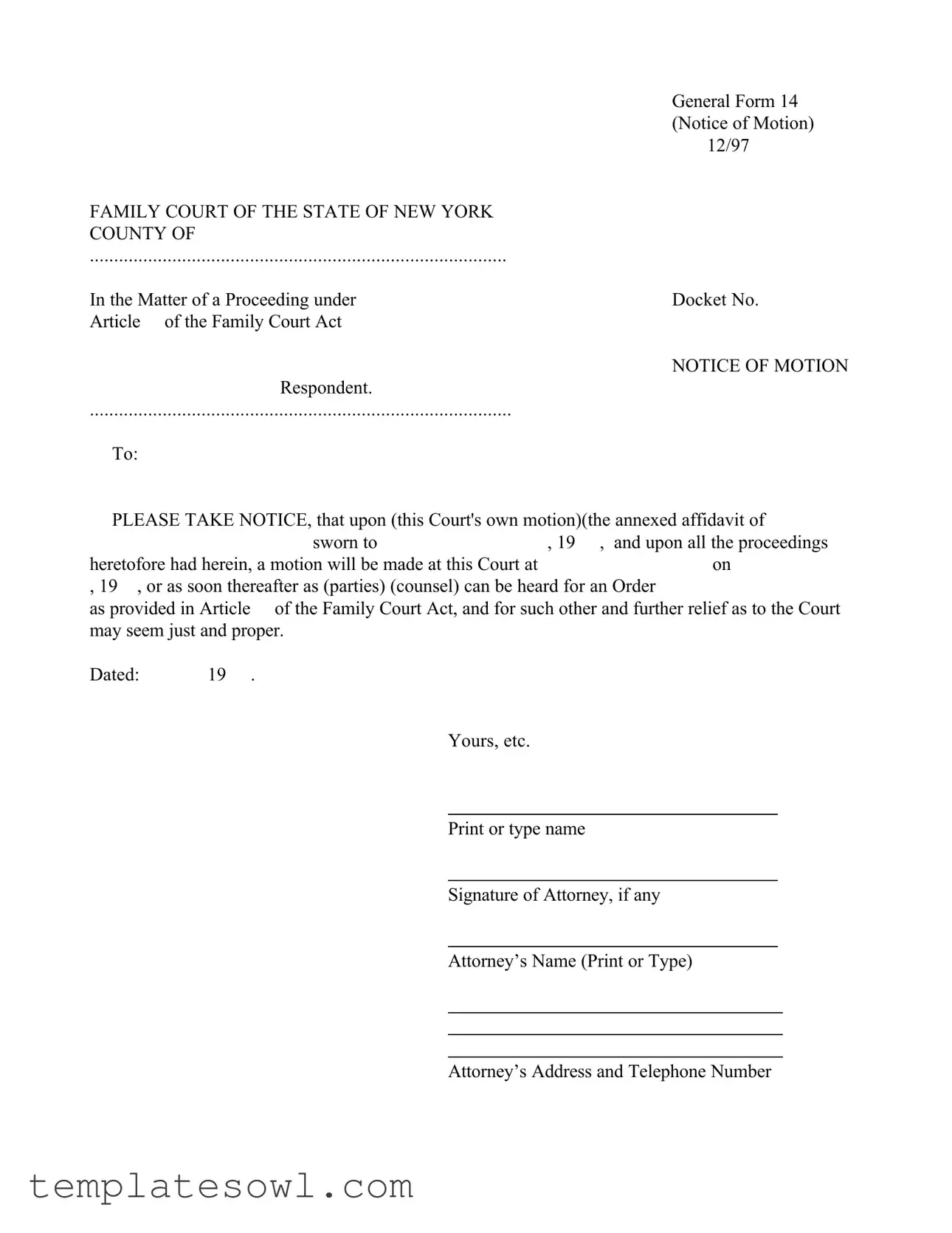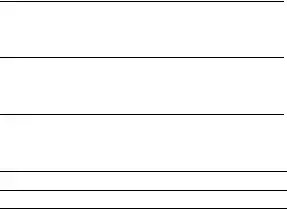What is the General 14 form used for?
The General 14 form, also known as the Notice of Motion, is utilized in family court proceedings in New York State. It serves to notify the court and the opposing party that one party intends to request a specific action or order from the court. This form outlines the details of the motion and is essential for communicating your intentions legally.
How do I complete the General 14 form?
To complete the General 14 form, you will need to fill in several critical details. Start by providing the name of the county where the case is filed and the proper docket number. Indicate the article of the Family Court Act under which the motion is being made. Ensure you include the date of the affidavit, and clearly state the name of the respondent and any relevant information that pertains to your motion. Finally, sign the document and provide your contact details, including the address and telephone number of any attorney involved.
How is the General 14 form submitted to the court?
The completed General 14 form should be filed with the clerk of the court where your case is pending. You may need to provide multiple copies, depending on the court’s requirements. After filing, ensure that you serve a copy of the completed form to the opposing party, typically through personal delivery or mail, so they are informed about the motion being filed.
What happens after filing the General 14 form?
After filing the General 14 form, the court will schedule a date for the hearing. You, along with the other party involved, will be notified of this date. It is important to prepare your arguments and compile any supporting documentation or evidence that may be necessary for the hearing.
Is there a fee for submitting the General 14 form?
Yes, there may be a filing fee associated with submitting the General 14 form, but this can vary depending on the specific court and the nature of the motion. It’s advisable to check with the court’s clerk or visit their website for the most current fee schedule, as some individuals may qualify for fee waivers based on financial need.
Can I change or withdraw a motion after filing the General 14 form?
Yes, you can change or withdraw your motion after filing the General 14 form. If you decide to withdraw it, you will need to notify the court and the other party formally. This action typically involves submitting a request to withdraw the motion in writing and may require a signature from the judge. However, if you wish to modify the motion, you might need to file an amended form that clearly outlines the changes.
What if I need assistance with the General 14 form?
If you require assistance with filling out or submitting the General 14 form, legal aid organizations can provide valuable help. Additionally, some courts offer self-help resources that can guide you through the process. Consider reaching out to a qualified legal professional if the matter is particularly complex or if you have specific questions regarding your case.

